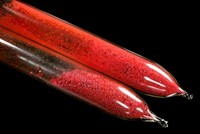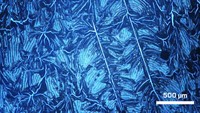Advertisement
Grab your lab coat. Let's get started
Welcome!
Welcome!
Create an account below to get 6 C&EN articles per month, receive newsletters and more - all free.
It seems this is your first time logging in online. Please enter the following information to continue.
As an ACS member you automatically get access to this site. All we need is few more details to create your reading experience.
Not you? Sign in with a different account.
Not you? Sign in with a different account.
ERROR 1
ERROR 1
ERROR 2
ERROR 2
ERROR 2
ERROR 2
ERROR 2
Password and Confirm password must match.
If you have an ACS member number, please enter it here so we can link this account to your membership. (optional)
ERROR 2
ACS values your privacy. By submitting your information, you are gaining access to C&EN and subscribing to our weekly newsletter. We use the information you provide to make your reading experience better, and we will never sell your data to third party members.

This micrograph shows a leak caused by corrosion on the inside of a tin-plated aerosol can. Bob Pearce, R&D director for NCH Corp., wanted to test the shelf life of a coil cleaner for air conditioners. He and a colleague loaded the cleaner, which is a water-based solution containing sodium hydroxide, into a pressurized can and heated it continuously for 90 days in an oven to accelerate the breakdown of the can. After 30 days, the container’s pressure began to drop, indicating a leak, and it began to deteriorate visibly. At the trial’s end, the researchers inspected the can with a microscope and found that a breach in the coating had allowed the sodium hydroxide in the cleaner to seep underneath and corrode the can’s wall.
The largest hole is less than .5 mm.
Submitted by Bob Pearce
Do science. Take pictures. Win money. Enter our photo contest here.
For more Chemistry in Pictures, visit our new home on cen.acs.org.
Related C&EN Content:





Join the conversation
Contact the reporter
Submit a Letter to the Editor for publication
Engage with us on Twitter